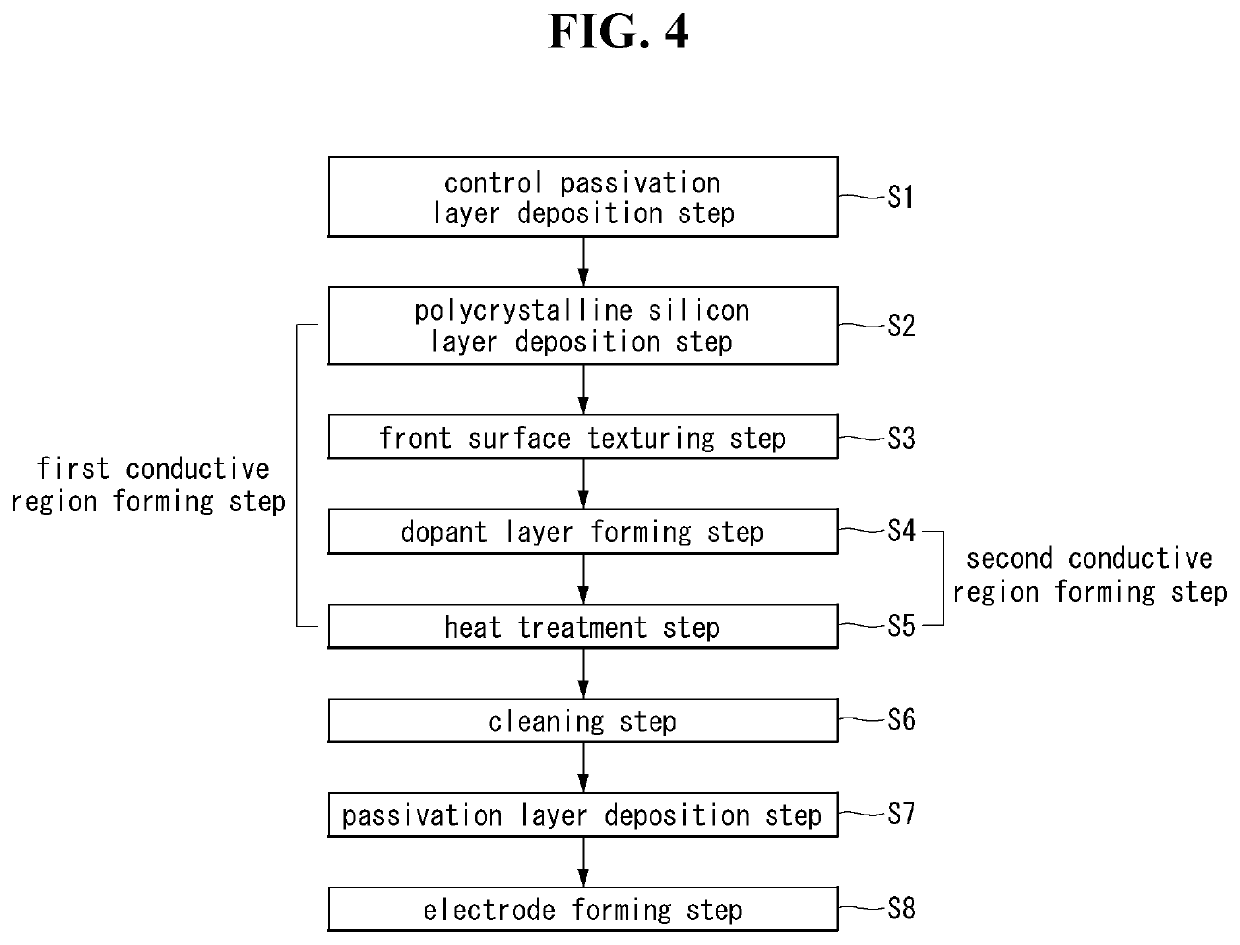Method of manufacturing solar cell
a manufacturing method and solar cell technology, applied in sustainable manufacturing/processing, climate sustainability, semiconductor devices, etc., can solve the problems of increasing the manufacturing cost increasing the defective rate of the solar cell, and the operation error of the semiconductor equipment, so as to reduce the defective rate of the edge isolation structure, reduce the contamination of semiconductor equipment, and simplify the manufacturing process
- Summary
- Abstract
- Description
- Claims
- Application Information
AI Technical Summary
Benefits of technology
Problems solved by technology
Method used
Image
Examples
first embodiment
[0115]FIG. 3 is a view illustrating an isolation structure of a solar cell according to the present disclosure.
[0116]FIG. 3 illustrates a side surface of a solar cell in order to explain an isolation structure formed on the side surface of the solar cell illustrated in FIGS. 1 and 2.
[0117]As illustrated in FIG. 3, in the solar cell according to the present disclosure, the first conductive region and the second conductive region may be spaced apart from each other on the side surface of the semiconductor substrate to form an isolation structure.
[0118]More specifically, the first conductive region may be formed on the side surface of the semiconductor substrate and mainly formed on the back surface of the semiconductor substrate with respect to the center of the side surface of the semiconductor substrate (i.e., the center of the semiconductor substrate in the thickness direction) and the second conductive region may be mainly formed on the front surface of the semiconductor substrate...
second embodiment
[0199]The solar cell having an isolation structure has the same basic configuration as the solar cell illustrated in FIGS. 1 and 2, but there are some differences in positions of formation of each layer or film. In the following description, “A” is indicated after the numeral reference indicating each element.
[0200]Accordingly, elements having the same number in the drawings illustrating the isolation structure of the solar cell according to the first embodiment described above and in the drawings illustrating the isolation structure of the solar cell according to the second embodiment below may be regarded as the same elements having the same function.
[0201]FIG. 23 is a view illustrating an isolation structure of a solar cell according to the second embodiment of the present disclosure, and FIG. 24 is a cross-sectional view of an isolation line 200 illustrated in FIG. 23, taken along line II-II of FIG. 23. (a) of FIG. 23 shows the entire pattern of any one of one surface or the ot...
PUM
| Property | Measurement | Unit |
|---|---|---|
| thickness | aaaaa | aaaaa |
| thickness | aaaaa | aaaaa |
| thickness | aaaaa | aaaaa |
Abstract
Description
Claims
Application Information
 Login to View More
Login to View More - R&D
- Intellectual Property
- Life Sciences
- Materials
- Tech Scout
- Unparalleled Data Quality
- Higher Quality Content
- 60% Fewer Hallucinations
Browse by: Latest US Patents, China's latest patents, Technical Efficacy Thesaurus, Application Domain, Technology Topic, Popular Technical Reports.
© 2025 PatSnap. All rights reserved.Legal|Privacy policy|Modern Slavery Act Transparency Statement|Sitemap|About US| Contact US: help@patsnap.com



